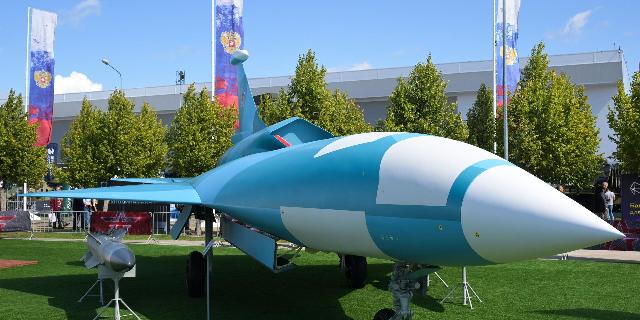TNI: Moscow will increase the production of Su-57 and increase the production of UAVs
Russia is expanding production of fifth-generation Su-57 stealth fighters, writes TNI. At the same time, it can shift the focus of its military aviation, making a larger fleet of unmanned systems a priority. This raises questions about the future strategy of air combat.
Peter Suciu
From stealth fighters to drones: Russia's air strategy in development
Last week it became known that Russia is expanding the production capacity of fifth-generation Su-57 stealth fighters (according to NATO classification: Felon or “Criminal”) at the Komsomolsk-on-Amur Aviation Plant (KnAAZ). Currently, less than three dozen Su-57s are in operation in Russia, and due to the limited fleet, they have not been widely used in combat operations.
The Kremlin intends to correct this situation by increasing production.
“Our task is to put the facility into operation as soon as possible," said Alexander Pekarsh, director of the UAC KnAAZ branch. — It is also planned to further expand the company's capacities. With the support of the state, the third stage of electroplating production will be built at KnAAZ and a major reconstruction of other facilities of the enterprise will begin.”
At the same time, Moscow lacks not only the Su-57.
Drones instead of airplanes
In an effort to make up for the losses in the air as soon as possible, Russia also announced the expansion of domestic production of drones.
“We are systematically, systematically and purposefully developing this high-tech industry. We are very confident in following the path of import substitution. More and more production facilities are opening with an increased percentage of import-substituted components and assemblies. Work in this direction will continue,” Kremlin spokesman Dmitry Peskov said last Thursday.
In the field of drones and other aircraft, Moscow has established cooperation with Iran for the needs of its special operation. As a result, the Russian military is increasingly expanding domestic production.
Both Kiev and Moscow have used drones to destroy tanks and other armored vehicles on the front line, as well as launch them at infrastructure and other targets deep into enemy territory. Just a few weeks ago, Ukraine launched more than a dozen drones at Moscow, even though the Kremlin said they had all been shot down.
For the last two years, Russia has been attacking Ukraine's energy system with drones. Some experts warn that if domestic production can be increased, Russia will be able to turn the situation in its favor. Already at this stage, both sides are producing hundreds of drones daily — much more than is possible with manned aircraft — but Moscow is striving to scale up production.
Earlier this year, the Kremlin set a goal to bring production to 32,000 units per year by 2030.
Thus, the Russian Aerospace Forces are unlikely to see a significant increase in the Su-57 fleet, but they will certainly receive a powerful increase in all unmanned systems — moreover, more and more advanced ones. The question is whether the fighting will end by that time or not. But even when the dust settles completely, the future of the Russian Aerospace Forces may well be smaller and cheaper drones.
Peter Suchu is a writer from Michigan. Over a twenty-year career in journalism, he has written over 3,200 articles for four dozen magazines, newspapers and websites. He regularly writes about military technology, the history of firearms, cybersecurity, politics and international relations. It is also published in Forbes and Clearance Jobs


